Cream of Wild Mushroom Soup: The Scandalous Tastes of Agnès Sorel
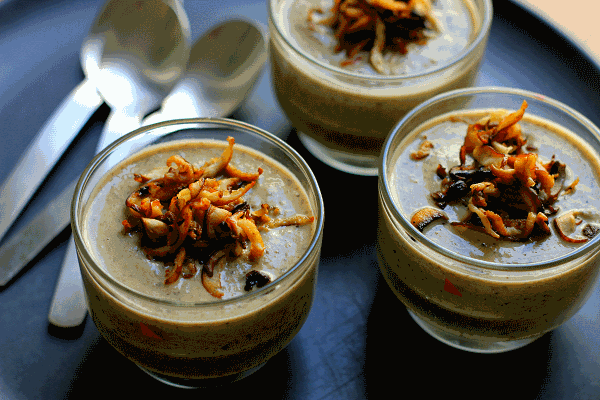
Autumn in Paris means one thing to gourmands all over the city: wild mushrooms! Varied, earthy, and delicious, wild mushrooms are nature’s gift to those courageous enough to hunt for the delicacy in nearby Fontainebleau forest. But centuries ago, mushrooms were suspect at best. And at worst? They were downright scandalous.
The mushrooms available to us at the market all year long, white or brown button mushrooms, are known as champignons de Paris. These “Paris mushrooms” were cultivated in the city’s catacombs and former gypsum quarries starting in the 17th century. By the 19th century, the Paris region had no fewer than 250 mushroom farms!
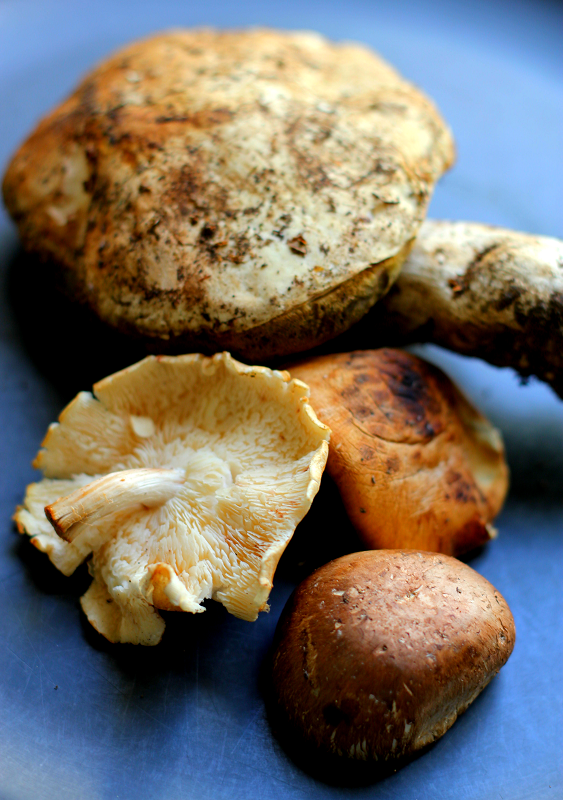
Various mushrooms available at Parisian markets (from top): bolete or cep (sometimes sold under the general name, porcini), chanterelle (girolle in French), shiitake, and brown button (champignon brun). Photo: Allison Zinder.
Unfortunately, metro construction projects starting at the end of the 1800s spelled the end of Parisian mushroom cultivation, and now most mushrooms come from champignonnières, or mushroom-growing cellars, in the Loire Valley, near Saumur.
But long before cultivated mushrooms were popular, wild mushrooms were readily available to those who gathered them in the forest. They were regarded with both reverence and suspicion by superstitious eaters. Hallucinogenic, poisonous, and sometimes deadly, mushrooms grow, according to Maguelonne Toussaint-Samat, author of the definitive History of Food, “in humus, the rotting vegetation found on damp soil” and represented “life regenerated by decay and death.” (Bon appétit!)
And according to medieval food specialist and author of culinary crime novels Michèle Barrière, most all vegetables were suspicious in the Middle Ages because they grew close to the ground. People accused vegetables of tous les maux, or all ills.
The only time I felt ill around mushrooms was many years ago, before the actual mushroom hunt. My foraging friend, keen on keeping his secret mushroom spot just that – a secret – took the extreme precaution of blindfolding me during the drive out to the forest. By the time we arrived to his destination, I felt a little car-sick, even though I hadn’t yet tasted a single mushroom!
Once home though, we cooked up the mushrooms in several different ways, inspired by the different recipes famous chef Auguste Escoffier named “Agnès Sorel.” Just who was this Ms. Sorel, and why are all these French mushroom recipes named for her?

Melun-Diptychon (Portrait of Agnès Sorel as Madonna with child), by Jean Fouquet. 1450
Born in the 15th century, la dame de beauté, or the beautiful Agnès Sorel, became France’s first ever “legitimate” mistress in 1443. Whereas other kings hid (more or less in plain sight) their relationships with other women, Charles VII’s love for Agnès was honored in a great feast and joust in the city of Nancy. There, Charles VII apparently paid off the other jousters so that he would win, thereby earning more respect in the eyes of his beloved courtesan.
Agnès Sorel was the first favourite, or mistress, to be officially presented at the court, and she took full advantage of her power: not only did her beauty stun the king into submission, she proceeded to help Charles VII rule France, and shook up the traditions and values of the day.
Her style caused scandals left and right: her sable-lined dress trains, sometimes up to eight meters long, surpassed the queen’s in length and luxury. Agnès also outshone the queen by inventing the shoulderless décolleté, characterized as debauched and “representative of weakening values,” according to religious leaders of the time. The ancestor of the bra was born around then, and this bustier délacé or unlaced bustier accentuated a woman’s breasts. (As seen in several renderings of Agnès Sorel, she didn’t seem to need much help in that department.)
Her beauty regime was as impressive as it was unorthodox, at least by modern standards: she used snail saliva to prevent wrinkles, and bathed in donkey’s milk. And her makeup? Ground-up cuttlefish bones served as a fashionably white foundation, and she transformed poppy petals into lipstick. Try finding all that loot at the famous French store Marionnaud!
Even at the table, Agnès Sorel also imposed her sense of modernity: it is said that she was among the first to use a fork, although most accounts of the “devil’s tool” place its importation into France under Catherine de’ Medici more than a hundred years later. Agnès Sorel loved honey and spice bread, invented in the 15th century for Charles VII, and of course, those suspicious mushrooms.
Agnès was what the French would call a gourmande, hiring the best chefs to keep her roi chéri – dear king – in good health. But she never balked at trying her hand at cooking, and allegedly spent a lot of time in the kitchen herself.

The Abbaye de Jumièges. Photo: Allison Zinder.
Was it for that reason that Escoffier named his mushroom recipes after her? Or simply because France’s first legitimate mistress deserved an equally scandalous legacy? Agnès Sorel even went out with a bang: she died in 1450 of mercury poisoning, and many historians believe she was deliberately poisoned. Her heart is buried at the Jumièges Abbey in Normandy. Next time I visit the abbey, I think I’ll leave a bouquet of mushrooms on her tomb. Merci, Agnès!
Cream of Wild Mushroom Soup
This earthy soup is perfect for taking advantage of autumn’s bounty of fresh wild mushrooms. In French, this delightfully rich soup would be called a Crème Agnès Sorel or Velouté de champignons.
Because it’s so creamy and rich, I serve it as a luxurious special occasion soup, in small cups, or even as an amuse-bouche, or palate-tickler, in even smaller cups or glasses, before the first course. If you’re already looking around for a posh appetizer for your Thanksgiving menu, this would be a tasty choice – it never fails to impress guests!
This is an adaptation of a recipe from a book called Le meilleur de la cuisine française in the “Saveurs et Terroirs” series by Hachette. It might seem fussy to cook the mushrooms without the stock for 20 minutes, and you will be tempted to skip step 4. Please don’t! The mushrooms need this butter-braising process to really bring out their best flavour. And the result? You won’t regret it!
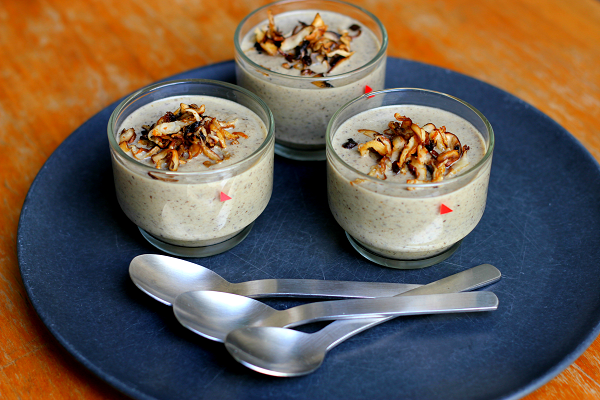
Cream of Wild Mushroom Soup served in amuse bouche cups. Photo: Allison Zinder
Ingredients:
- 5 medium shallots (about 5 ounces or 140 g), peeled
- about 5 medium (3½ ounces or 100 g) button mushrooms, washed and drained
- about 12 (3½ ounces or 100 g) shiitake mushrooms, stemmed (you can save the stems for the stock pot!)
- about 3 (7 ounces or 200 g) cep or porcini mushrooms (you can also use cremini, or any type of wild mushroom you find at the market)
- 2 tablespoons (30 g) butter
- 2½ cups (600 ml) chicken stock, room temperature
- 1½ teaspoons fine sea salt
- a few twists of the pepper mill
- 1¼ cups (300 g) heavy cream
How to make it:
- Finely slice the shallots. Wash the button mushrooms in a bowl of cold water, lifting them out to leave the dirt which has sunk to the bottom.
- Clean the wild mushrooms with a damp cloth, wiping away the soil and/or leaves. Reserving a few of the best-looking mushrooms (your choice) for the julienne garnish, slice all the mushrooms finely.
- Melt 1½ tablespoons of the butter over medium heat in a large soup pot. Turn the heat down to medium-low, and cook the shallots until they are very lightly browned, about 6-7 minutes, stirring frequently.
- Add all the mushrooms to the pot, cover, and cook over low heat for 20-25 minutes.
- Add the chicken stock, salt, and pepper. Bring to the boil over medium-high heat, then simmer over low heat, covered, for 20 minutes more.
- In the meantime, cut into the finest, tiniest strips possible (julienne) the reserved mushrooms, and sauté them over medium heat in the remaining butter for about 3 minutes.
- Finally, add the cream to the soup, bring to the boil again, and simmer on low heat again, this time uncovered, for 15 minutes.
- Remove from the heat, and purée the soup using a wand mixer. Taste, season, and serve in small bouillon cups or small bowls. Decorate with the sautéed mushroom strips. Bon app’!
serves 4-5 as a starter; 7-8 as an amuse-bouche in tiny cups
Want to be inspired by more French foodie experiences and enjoy classic French food, wine and recipes? Head to our sister website, Taste of France here.
Share to: Facebook Twitter LinkedIn Email
Leave a reply
Your email address will not be published. Required fields are marked *

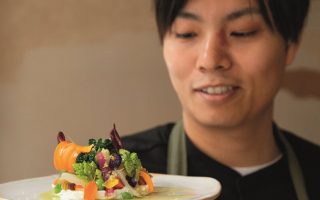

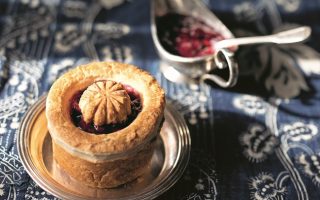
REPLY